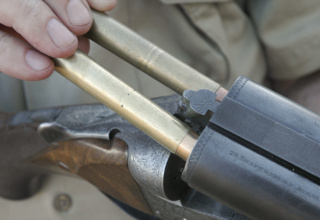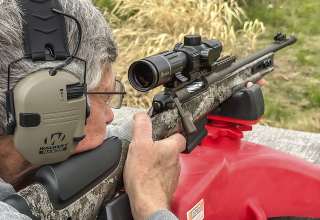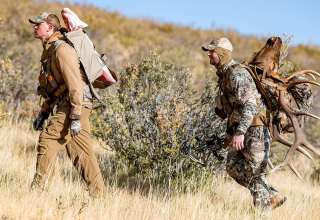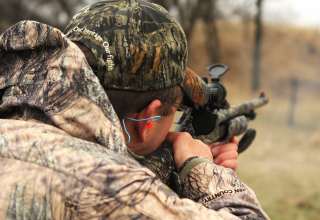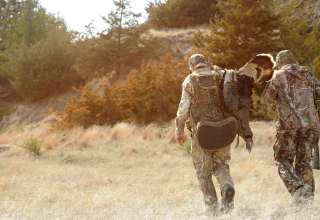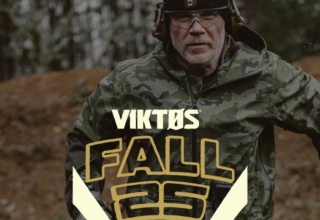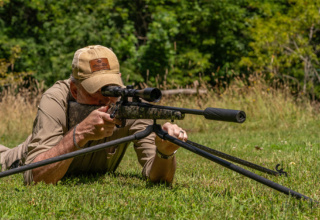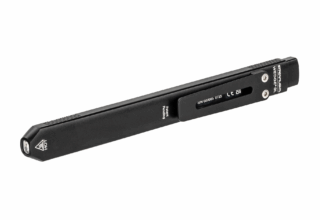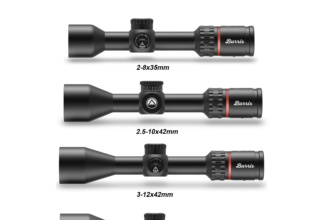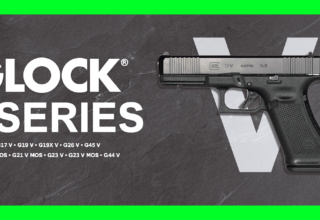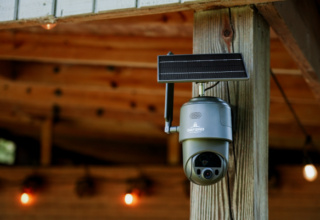Heading out West this fall? Here are some tips to help you quickly judge the size of that buck or bull you’ll be stalking
By Elle Lawrence
When you’re on the hunt for a quality buck or bull, be aware that headwear can appear larger than it really is the longer you stare at it through your binoculars. Trophy quality is really in the eye of the beholder, but to ensure that you don’t shoot an undersized or immature animal, it takes practice to really size up game.
If you’re a first-timer to hunting the great West and haven’t gotten your eyes on many mule deer, antelope, or bull elk, these tips are for you. It takes years of experience and many hours sitting behind optics to truly become knowledgeable on what characteristics make a great head of horns. Start with these tips.
Length, Mass, Width
Each species of animal has its own measuring system taken by the Boone & Crockett Club, and each species has different characteristics to look for. For example, a mule deer with a 30-inch inside spread is highly sought after, while a bull elk could have an excellent 5-point rack at a young age and just an “okay” 6-point rack a year later.
The most important characteristics to look for on any male animal is the length and mass of the antlers, and the width (or spread) between the two.
Length: This refers to both the main beam and the tines of a buck or bull, and the overall horn length of an antelope. The main beam of a bull elk should be long — long enough to scratch his rump. His tines should be long and curve upward with ivory-white tips. On a mule deer, you want the main beam to stretch tall and high, while tine length can be judged by the “fork” shape they make off the main beam. Look for deep forks to determine a mature muley. For antelope, use the length of the animal’s ear for reference. A speed goat’s ears are around six inches. Ideally, your buck’s horns should appear two and a half to three times as long as the ears.
Mass: This characteristic can be hard to judge unless the mass of the buck or bull is blatantly obvious. Heavy antlers are a solid key that you’re glassing a mature animal. To judge mass, compare the antlers to the circumference of the base of the animal’s ears. If the antlers or horns are as large or larger than the ear base, he has good mass. For pronghorn, mass is best judged from the side on and it’s best to use their eye as a reference point. You want the horn base to be bigger than their eye.
Width: The key characteristic is to look for a spread that extends outside the ears of the buck. If his headwear is wider than his ears, you’re looking at a good buck or bull.
The number of tines can add to the overall score of your buck or bull, and we know that is always the number hunters first point to when telling people about their hunt. The tines on a whitetail are generally referred to as an overall number, such as “10-pointer.” Mule deer, elk, Coues deer, blacktail, and other western ungulates are, instead, referenced by the tines on each antler. A mule deer with three tines on his right and four on his left is a “3 by 4.” The more tines an animal has, the more inches to add to the overall score of your trophy.
Walking Away Illusion
Don’t make the rookie mistake of judging a buck or bull that’s walking away from you — they always appear bigger from behind.
It’s best to size up your quarry from all angles. Seeing horn or antlers from right, left, and straight on will give you the chance to really study the deer, elk, or antelope you’re looking at. From behind, you can’t see his bases and their mass, and you can’t get a solid look at a muley’s forks or the tines of an elk. Wait for the deer to quarter to you, or stalk around to get a better look at him.
Judging From a Distance
Unlike close hunting quarters you can experience in the east that allow you to really size up an animal from near proximity, hunting out west offers expansive landscapes that often require you to judge animals from long distances through quality glass.
When spotting animals from hundreds of yards away, use the distance to your advantage and take the time to study what you’re looking at. Use land references to help determine the maturity of bucks or bulls. How does their body size compare to the bushes they’re next to? Are there other bulls in the herd? How do the racks compare to each other?
It’s best to study from a distance, but when the opportunity presents itself, stalk to a closer distance to really field judge size.
Shoot Your Own Trophy
Yes, a trophy-quality animal is technically determined by numbers; however, a trophy animal can be something different to each hunter and numbers are…just numbers. If you’ve made the trek out West and spent your savings on a bull elk tag, then send a bullet at the bull that makes your heart race. Success can be measured in the experience, antler length, or the number of pounds of fresh meat that will load your freezer. It’s your call.
- Judging Western Game on the Hoof - July 8, 2020
- Understanding Hunting Packs - June 9, 2020
- Turkey Load Patterning 101 - March 16, 2020






